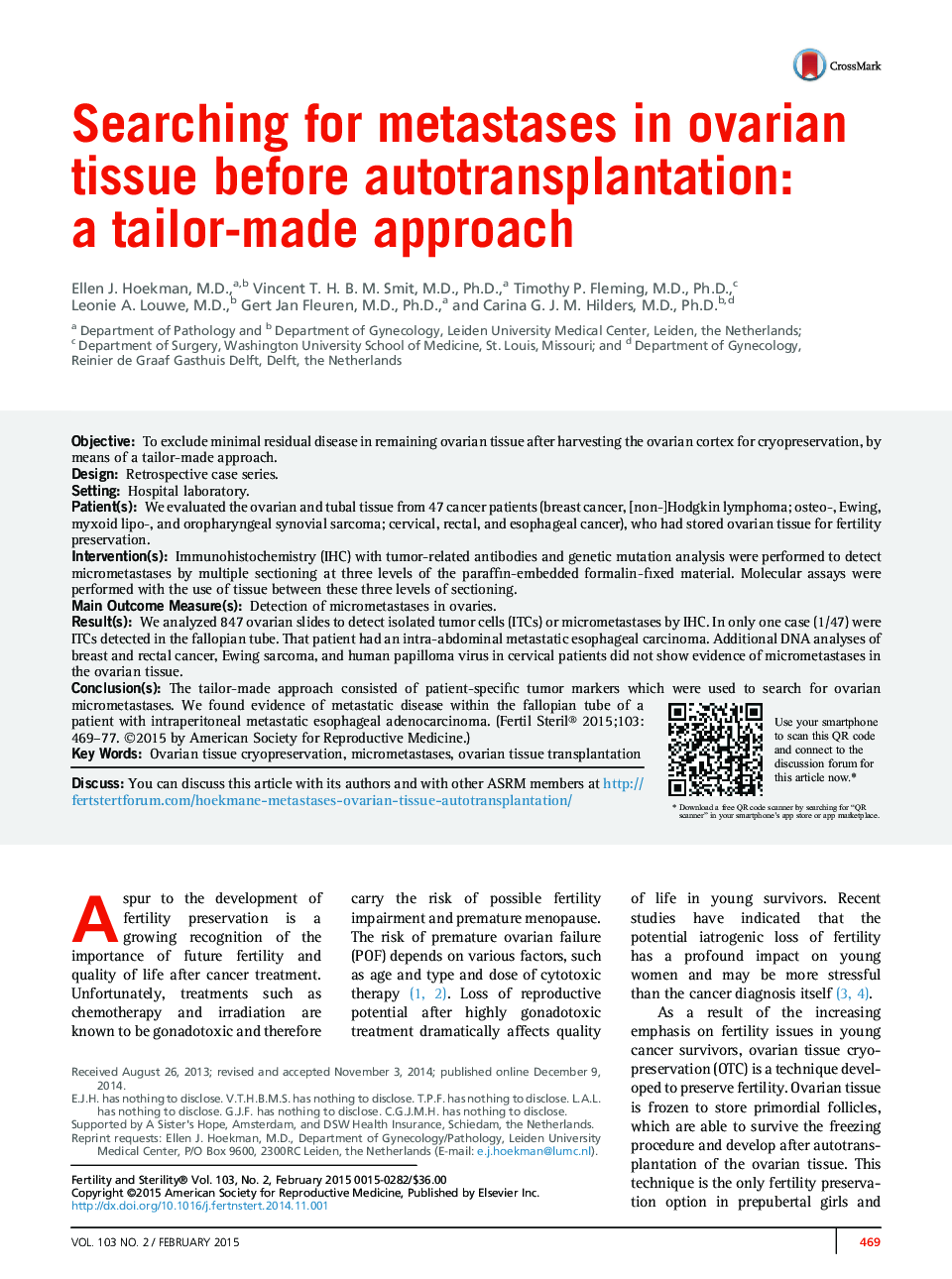| Article ID | Journal | Published Year | Pages | File Type |
|---|---|---|---|---|
| 6180070 | Fertility and Sterility | 2015 | 9 Pages |
ObjectiveTo exclude minimal residual disease in remaining ovarian tissue after harvesting the ovarian cortex for cryopreservation, by means of a tailor-made approach.DesignRetrospective case series.SettingHospital laboratory.Patient(s)We evaluated the ovarian and tubal tissue from 47 cancer patients (breast cancer, [non-]Hodgkin lymphoma; osteo-, Ewing, myxoid lipo-, and oropharyngeal synovial sarcoma; cervical, rectal, and esophageal cancer), who had stored ovarian tissue for fertility preservation.Intervention(s)Immunohistochemistry (IHC) with tumor-related antibodies and genetic mutation analysis were performed to detect micrometastases by multiple sectioning at three levels of the paraffin-embedded formalin-fixed material. Molecular assays were performed with the use of tissue between these three levels of sectioning.Main Outcome Measure(s)Detection of micrometastases in ovaries.Result(s)We analyzed 847 ovarian slides to detect isolated tumor cells (ITCs) or micrometastases by IHC. In only one case (1/47) were ITCs detected in the fallopian tube. That patient had an intra-abdominal metastatic esophageal carcinoma. Additional DNA analyses of breast and rectal cancer, Ewing sarcoma, and human papilloma virus in cervical patients did not show evidence of micrometastases in the ovarian tissue.Conclusion(s)The tailor-made approach consisted of patient-specific tumor markers which were used to search for ovarian micrometastases. We found evidence of metastatic disease within the fallopian tube of a patient with intraperitoneal metastatic esophageal adenocarcinoma.
